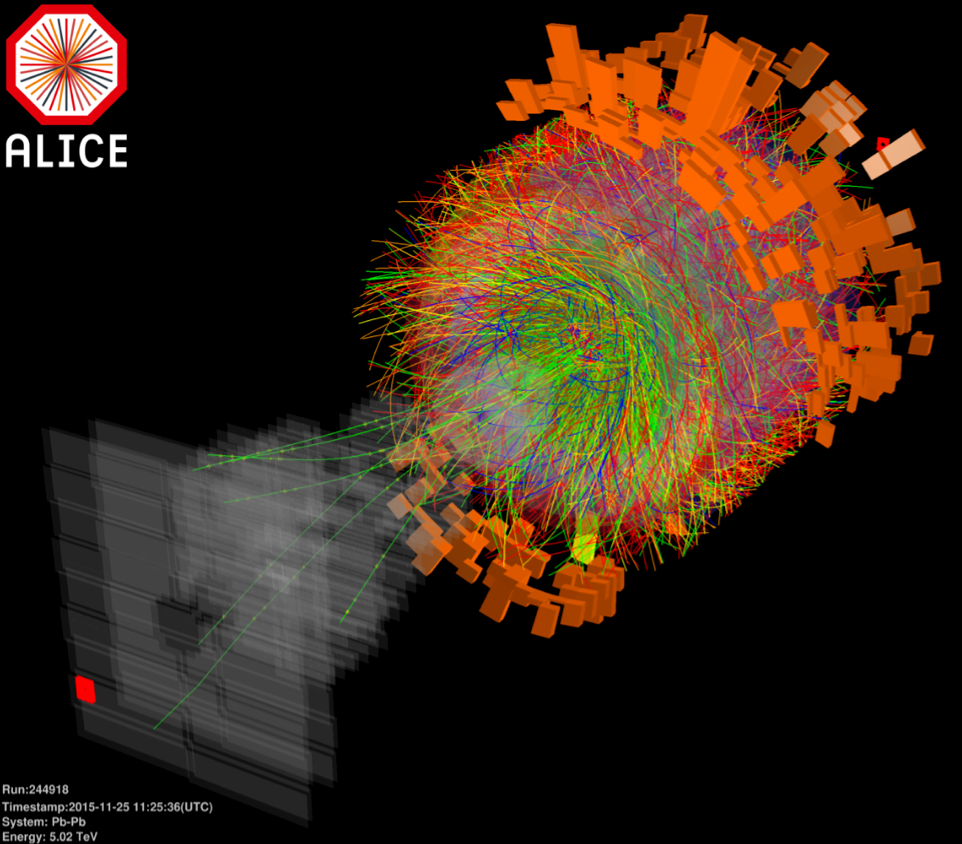Quark–gluon plasma is a very hot and dense state of matter wherein the fundamental components—quarks and gluons—are not limited inside composite particles known as hadrons, as they are in the neutrons and protons that compose the nuclei of atoms.

A lead–lead collision event recorded by ALICE in 2015. Image Credit: ALICE collaboration.
Believed to have been present in the early universe, this unusual phase of matter can be refabricated in collisions between lead nuclei at the Large Hadron Collider (LHC).
A new study from the international ALICE partnership at the LHC explores how various bound states of a charm quark and its antimatter equivalent, also formed in these collisions, are impacted by quark–gluon plasma.
The findings pave the way to new avenues for exploring the powerful interaction—one of the four central forces of nature—in the highest temperature and density environments of quark–gluon plasma.
Bound states of a charm quark and a charm antiquark, called charmonia or concealed-charm particles, are fastened by the powerful interaction and are exceptional probes of quark–gluon plasma.
In the plasma, their production is curbed because of “screening” by a large number of quarks and gluons present in this shape of matter. The screening, and consequently the suppression, increases with the plasma’s temperature and is estimated to impact different charmonia to different degrees.
For example, the creation of the ψ(2S) state, which is ten times more weakly bound and 20% more enormous than the J/ψ state, is believed to be more inhibited than that of the J/ψ state.
This hierarchical suppression is not the solitary destiny of charmonia in quark–gluon plasma. A huge number of charm quarks and antiquarks in the plasma—up to approximately a hundred in head-on collisions—also creates a mechanism, known as recombination, that develops new charmonia and opposes the suppression to some extent.
This process is predicted to rely on the momentum and type of the charmonia, with the more weakly bound charmonia perhaps being created through recombination later in the evolution of the plasma, and charmonia with the lowest (transverse) momentum have the maximum recombination rate.
Earlier studies, which utilized data from CERN’s Super Proton Synchrotron and then from the LHC, have demonstrated that the creation of the ψ(2S) state is more suppressed than that of the J/ψ. ALICE has also earlier provided proof of the recombination mechanism in J/ψ creation.
However, so far, there have been no studies of ψ(2S) production at low particle momentum that had been sufficiently precise to deliver decisive results in this momentum regime, thwarting a full picture of ψ(2S) production from being acquired.
The ALICE collaboration has released the first measurements of ψ(2S) creation down to zero transverse momentum, established on lead-lead collision data from the LHC gathered in 2015 and 2018.
The measurements reveal that, irrespective of particle momentum, the ψ(2S) state is inhibited around two times more than the J/ψ. This is the first time that a distinct hierarchy in suppression has been detected for the complete production of charmonia at the LHC. The LHC partnerships reported a comparable observation for bound states of a bottom quark and its antiquark.
When additionally explored as a function of particle momentum, the ψ(2S) suppression is observed to be decreased toward lower momentum. This characteristic, which ALICE earlier saw for the J/ψ state, indicates the recombination process.
Higher-precision studies of these and other charmonia in the future using data from LHC Run 3, which started in July, may result in a conclusive understanding of the adaptation of hidden-charm particles and, consequently, of the robust interaction that grips them together, in the extreme atmosphere of quark–gluon plasma.
Source: https://home.cern